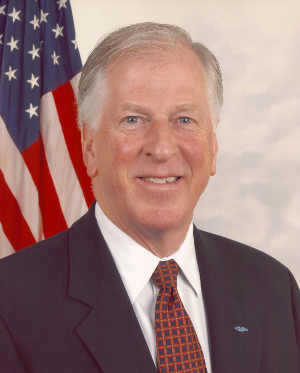- Kathy Windrem and Mike Adams
- Posted On
Voices of the Theatre: Theater secrets and great upcoming shows

Have you ever sat in the far back rows of the Soper-Reese Community Theatre, way up in the loges?
Kathy’s mom and dad, Walt and Madelene Lyon, insist on those seats whenever they come to the theater.
It started when they bought tickets to a nearly sold-out symphony concert and got seats in the top back.
They dragged themselves up, only to find the location to be one of the best-kept secrets at the theater.
Since there are no bad seats in the theater, and the best sound is right at the top, the Lyons now are regulars in those top rows.
Michael’s brother had season tickets to the Metropolitan Opera in New York and found the same thing. The sound is unbeatable in the cheap seats. Try the top seats sometime. You might be surprised.
In fact you might just try those top seats for one of our upcoming programs at the theater.
The Third Friday Live series resumed last month with music, dancing, friendship and good old community spirit. Next performance is Friday, October 19.
The symphony concerts return in November and December, the New Year will be welcomed in at the Soper Reese Theatre with the LC Diamonds, and Lake County Live is becoming an institution in our community.
If you missed August’s Lake County Live performance, you should get the CD that is on sale at the theater. The interview with the Coach of the KV Chain Saw Drill Team was a classic.
Doug Rhoades and his band of writers have more in store this month, and you will not want to miss the show at 6 p.m. Sunday, Oct. 28. Come to the theater to participate in the live performance or tune in to KPFZ 88.1 FM for the live broadcast.
We’re proud to announce an upcoming special program on November 11. We have teamed up with Ginny Craven for this Veteran’s Day benefit for Operation Tango Mike. Hear The Funky Dozen perform, with all the profits going to Tango Mike. You will have a great time while knowing you supported a worthwhile organization.
We have now expanded the role of the Soper-Reese Theatre in the community with the addition of two recently held events.
Late last month we featured the movie “California Indian.” Written, produced, acted and directed by Lake County’s own Tim Ramos, and featuring the Big Valley Rancheria, this encore showing was a very special event.
Last year it was the first movie shown with our new projector, and we had some slight problems with the sound. We were pleased to again show this important film.
The other event recently hosted by the Soper-Reese Theatre was a benefit concert for the Anderson Marsh Interpretive Association (AMIA).
The theater offered to host it in place of the popular annual Bluegrass Festival, which was unable to be held at the Anderson Marsh State Historic Park due to the State closing the park.
Hopefully the Bluegrass Festival will return to the park next year, but the recent event at the Soper Reese was so successful, we may host a benefit event annually for AMIA.
Finally, if you haven’t heard about the special program “Young Music Masters,” we want to let you know of this program featuring our talented local music students.
This concert, performed by young musicians, will benefit the Allegro Music Scholarship program. These scholarships have helped young music students afford private lessons.
Musical talent is alive and well in our community, and unfortunately not all these aspiring artists’ families can afford music lessons.
With the drastic cuts that have been made to music programs in our public schools, there is no more important investment we can make in our young people than supporting the development of their musical skills. We hope you will join us for all these worthwhile events at the Soper-Reese Community Theatre.
Coming up this month: Second Tuesday Classic Movies, “Ghost Busters,” Oct. 9, 6 p.m.; Wild West Saloon, Oct. 12, 7 p.m.; Third Friday Live, featuring Will Siegel and Friends, Oct. 19, 7 p.m.; Lake County Live, live radio broadcast from the stage and broadcast on KPFZ, 88.1 FM, Oct. 28, 6 p.m.; Young Music Masters, Nov. 4, 3 p.m.; Tango Mike Veteran’s Day benefit, Nov. 11, 7 p.m.
Tickets are available at The Travel Center in the Shoreline Shopping Center, Monday through Friday 9 a.m. to 5 p.m., the theater box office will be open again on Fridays from 10:30 a.m. to 5:30 p.m. starting on June 22 and is always open two hours before show time on the day of any event.
Tickets also can be purchased on line at www.soperreesetheatre.com .
For all the latest in information, tickets and more go to www.soperreesetheatre.com , and we’ll see you at the theater.
Kathy Windrem and Mike Adams are part of the large volunteer group that run the Soper-Reese Community Theatre in Lakeport, Calif.



 How to resolve AdBlock issue?
How to resolve AdBlock issue? 





